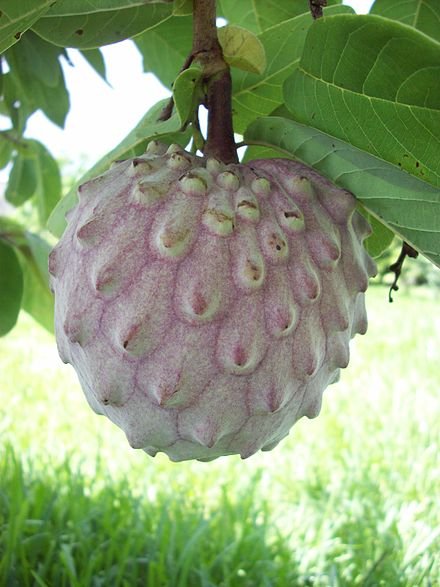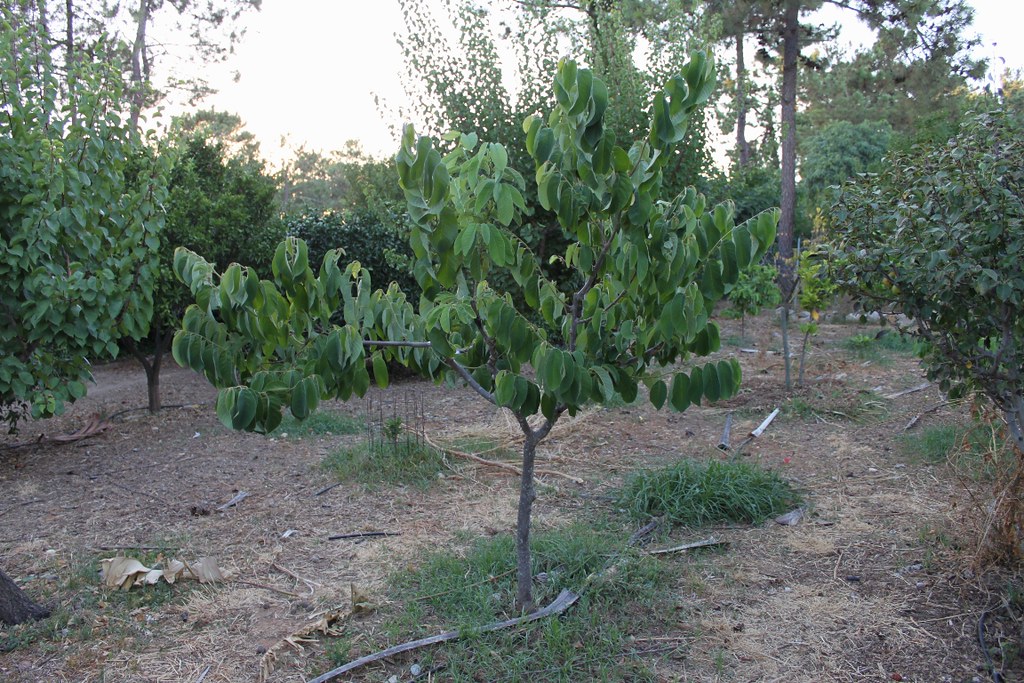Ilama
Scientific name: Annona diversifolia
Climate: Warm
Plant description: Erect tree with a dominant central axis. It measures on average about 4 m although it can reach 7 m, often branching from the base. Its bark is striated, aromatic and pale gray brownish in color. Its leaves, as its name explains (diversifolia), can have a great diversity of sizes and shapes, they are shiny, thin, elliptical, lance-shaped or oval and longer than wide, they can be large, 27 by 15 cm or small in width. 10 by 5cm.
The fruit is cone-shaped, heart-shaped or oval, it can measure up to 15 cm long and weigh 1 kg. The rind can be smooth or with triangular scales, either green rind with white sweet flesh inside or pink rind with pink sour flesh.
The solitary flowers have three very hairy, long and narrow petals, they can be of various colors: yellow with pink, pink with brown and purple, purple, brown or garnet. They have small, rusty, hairy sepals and inner, pollen-bearing stamen-like petals. The small flowers vary from 4 to 12 cm in length.
Cultivation: Each seed is wrapped in a green bean that, when opened, allows the seed to come out. The seeds remain dormant for several weeks or even months, and subsequently the germination rate reduces. Trees begin to produce between 3 and 5 years of age.
The cultivation of the Ilama is considered rustic; withstands adverse conditions, typical of clayey and stony soils. The plant requires a warm climate, with temperatures between 24 and 37º C and a dry and wet season.
It adapts well from 100 to 800 meters above sea level in sandy and clay loam soils, which allow a good vegetative and productive development of the crop.
It should be planted in places where it gets full sun, although when the trees are young need some shade. It can grow in degraded, dry, nutrient-free soils.
It prevents soil erosion and is extremely resistant, but it does not tolerate intense cold.
The tree adapts to different types of soils. It seems to grow best when there is a long dry season followed by heavy rains. In areas where rainfall is scarce, trees must be watered regularly.
The fruits are not picked until they have started to open, but can be picked a little earlier and kept for up to 3 days to soften them. They will not ripen if they are harvested too unripe.
The harvest begins at the end of June in Mexico and lasts only two weeks, in Guatemala it can be extended from July to September. Trees bear little fruit.
 Uses: They are consumed as fresh fruits, also in jams and jellies.
Uses: They are consumed as fresh fruits, also in jams and jellies.
They contain phenol and flavonoid compounds, results have been reported regarding the antibacterial activity of their extracts. They are widely used in traditional medicine to treat pain and other ailments. In studies, the component palmitone, which is an active anticonvulsant, has been isolated.
It could be considered as an important source of fiber, sugars, potassium and zinc.
In addition, the plant can conserve eroded soils as it grows on stony or nutrient-poor soils.
Plagues and diseases: The fruit is very hardy and at times completely immune to attack by seed-boring insects.
References:
Annona diversifolia. (n.d.). Useful Tropical Plants. Retrieved August 29, 2020, from http://tropical.theferns.info/viewtropical.php?id=Annona+diversifolia
Annona Diversifolia Ilama. (n.d.). Www.Frutalestropicales.Com. Retrieved August 29, 2020, from https://frutalestropicales.com/es/home/104-annona-diversifolia-ilama.html#cgtab
Ilama - Annona diversifolia. (2014, December 15). Growables.Org. https://www.growables.org/information/TropicalFruit/annonadiversifolia.htm
Srinivasan, N., & Roy, A. (2017). ANTICONVULSANT PROPERTIES OF SOME MEDICINAL PLANTS- A REVIEW. Asian Journal of Pharmaceutical and Clinical Research, 10(2), 109. https://doi.org/10.22159/ajpcr.2017.v10i2.14501
Wikipedia contributors. (2020, May 6). Ilama (fruit). Wikipedia. https://en.wikipedia.org/wiki/Ilama_(fruit)
En español: Papausa

